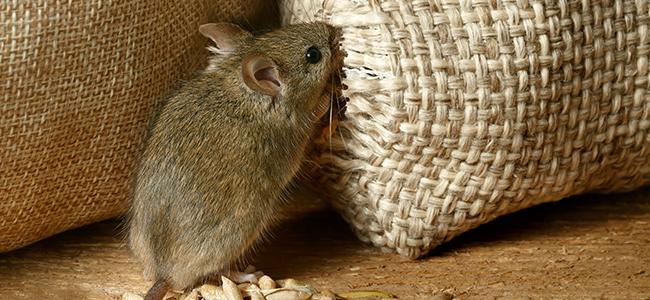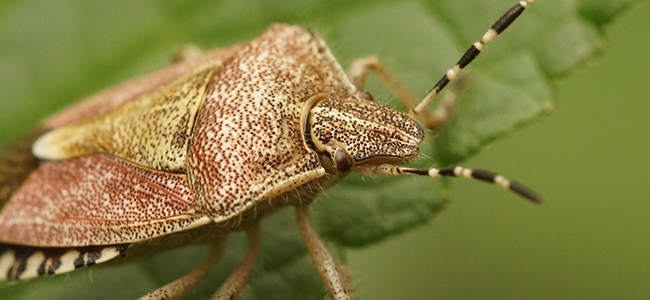
This is How Mice Keep Getting Into Your Washington D.C. Home
01/30/2022
It is estimated the more than 20 million homes in the U.S. each year are infiltrated by rodents such as mice and rats. Mice are small rodents that ...
READ MORE >
Learn the most common mistakes homeowners make before you launch your next search and destroy mission on pests in and around the home and hear what the experts say about how just a few simple adjustments could mean the difference between failure and success.
1. You find Ants in the kitchen or bathroom and spray.
Entomologists warn that grabbing the nearest over the counter spray for ants may actually make the problem worse. While many OTC ant sprays (for use indoors) will kill ants on contact they also leave behind a repellent substance on surfaces that may force foraging ants in the kitchen or bathroom in all directions, thereby limiting your chance of finding and eliminating the colony. Without eliminating the colony, the ants will continue to thrive and little black ants foraging for food and moisture will return to kitchens and bathrooms in only a matter of days. Remember, ants work to support the colony by hunting for food, moisture and shelter 365 days a year. Those that you see typically represent only 8-10% of the total colony. By using indoor baiting techniques, foraging ants can be used to your advantage to transport product to the nest in an effort to eliminate the entire colony.
2. You set a mouse trap in the middle of the kitchen floor, attic, basement or pantry.
Do not be surprised to find your trap untouched if it is placed out in the open. While rodent pests may be inquisitive they do not have the keenest eyesight and generally prefer to travel parallel to walls and surfaces, often following the same routes. Mouse trap placement and orientation is vital to the success of making a catch. Always follow the label instructions and remember to place traps perpendicular to the wall, bait-side in. If you have pets or children in the home, you may want to consider placing your traps beneath floor cabinets (by removing the lowest drawer), or behind the stove or other concealed areas where mice are still known to traffic. Also remember not to overload your trap with bait. A small smear of peanut butter, chocolate icing, or tidbit of bacon will go a long way. Hint: If you’re not sure where to place your traps you can’t go wrong by placing them where you find mice droppings! Learn to set a mouse trap in this 30-second video.
3. You look for Carpenter ants during the day.
The most difficult key to eliminating Carpenter ants, is locating the nest. It is a common mistake that homeowners make when they first detect large, black ants inside their home or condo. The bug experts at American Pest, a longtime Maryland pest control company, recommend not trying to locate the nest during the day, when as few as two, three, or four ants may be spotted inside. The trick to locating the Carpenter ant nest is to search for the ants at night, when they are most active. Carpenter ants prefer to nest in wood that may or may not have been previously damaged by moisture. They can be found in knots of trees, behind the fascia or soffit, behind siding and where wooden structures like decks or pagodas meet the house. They may prefer frames and sills associated with doors and windows, especially if moisture is present. Inspect these areas with a flashlight after dark for signs of Carpenter ant activity.
4. You spray inside for Stink bugs.
We know you’ve done it, and we understand all the reasons why. Unfortunately, once Stink bugs have made their way indoors they are much more difficult to control. American Pest suggests you treat outdoors and treat early—in some cases as early as September, or before nighttime temperatures start to drop into the 50s and below. Start by examining all the possible entry points and seal those off with a high quality sealant, or cover them with insect screening. Then turn your focus to applying a long-lasting insecticide around doors, windows, and thresholds. Be certain your product is labeled specifically for Stink bugs and outdoor use. For Stink bugs that are already inside, try using a vacuum or placing out bowls of soapy water.
5. You fail to search under the box spring for bed bugs.
It’s all too common to miss a bed bug problem by not inspecting beneath the bottom-most box spring or mattress. Bed bugs are cryptic in nature, squeezed into the screw openings of bed frames, the seams of mattresses and beneath the slats of platform beds. Do not make the mistake of leaving any aspect of your bed unturned, literally. Remember to make use of a bright flashlight and the help of an adult family member when turning the mattress and box spring to inspect for Bed bugs. Watch for ink-like stains on light wood and fabric or insect parts from molted skins as the bugs grow from egg to adult.

01/30/2022
It is estimated the more than 20 million homes in the U.S. each year are infiltrated by rodents such as mice and rats. Mice are small rodents that ...
READ MORE >

11/12/2021
Are mice invading your Washington D.C. home? Call American Pest to keep your home mouse-free....
READ MORE >

10/05/2021
Stink bugs are one of the most unpleasant nuisance pests that you can have in your home. They might not be the most dangerous insects, but they top...
READ MORE >

09/03/2021
Healthcare facilities, such as hospitals, nursing homes, rehabilitation centers, and emergent care centers must maintain a strict level of sani...
READ MORE >

Protect your home and family from nuisance and potentially damaging pests with a Preferred Care home pest control plan. Starting at $49/month

Don't let the bed bugs bite a second longer. Contact American Pest for the most comprehensive bed bug control in the industry. Learn More

Our certified rodent control pros will put an end to your frustration by getting rid of rats and mice inside your home. Learn More

Say goodbye to wood-destroying termites in your home when you contact American Pest for expert termite control. Learn More

Trust American Pest to deliver professional backyard tick control services that are guaranteed to get results. Learn More

Don't spend the warm-weather season indoors, find out how American Pest's professional treatments get rid of mosquitoes. Learn More
Fill out the form and recieve feedback in less than 5 minutes. For immediate service please call.